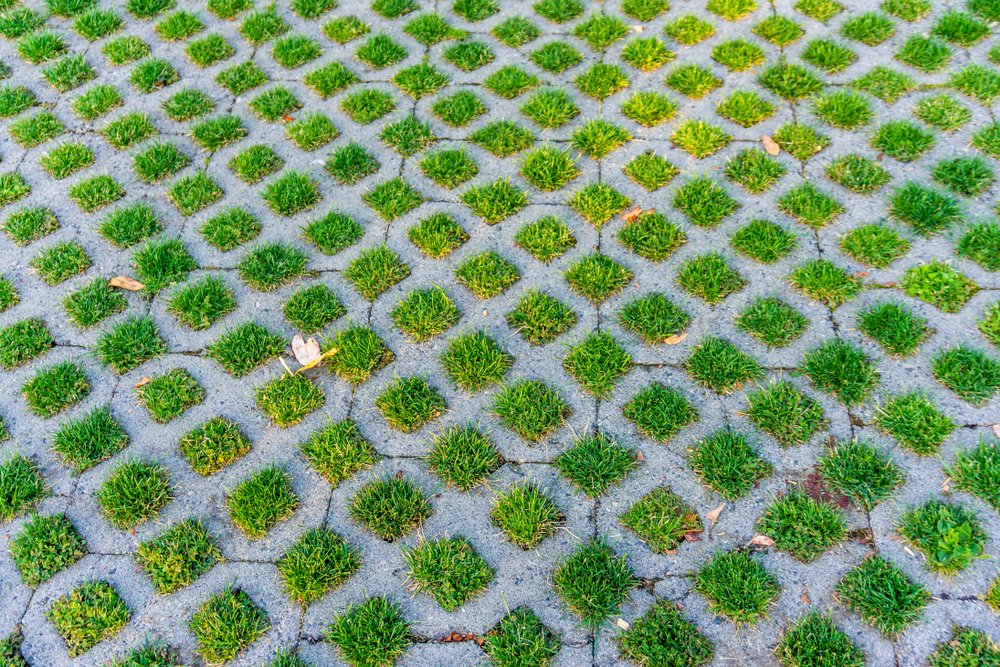Elements and Strategies of Sustainable Design in Architecture
Architecture Sustainable Design [Strategies & Benefits]
When an architect designs a new structure, their main goal is always to meet and exceed the client’s needs. Yet there’s one more entity that architects must design for as well:
The environment.
Architects can design structures that maximize natural resources and minimize the harm done to the planet.
With sustainable design practices, architects can:
Improve water and air quality
Reduce energy consumption
Restore and protect the natural habitat
Sustainable architecture has more benefits than some project owners realize. Architects have a responsibility to steer as many projects as possible in a sustainable direction to benefit the environment.
Project owners need to know that even a few small sustainable design decisions can make a big difference.
From strategies of sustainable design to its benefits, here's what you need to know to build an eco-friendly structure designed for the future.
What is Sustainable Design?
Sustainable design refers to any building project designed with respect to its environmental impact.
It’s about designing structures with climate change in mind. It’s about protecting natural resources and reducing harm to the existing ecosystem. It’s about the use of green materials and how and where those materials are sourced, transported, and disposed of.
It's more critical than ever to strive to:
Reduce carbon emissions
Cut energy consumption
Design structures with the environment in mind
With a sustainable design approach, architects can positively affect environmental change for decades to come.
Who Sets the Standards for Sustainability?
Any architect can design a sustainable development by following the BREEAM* and LEED** sustainability standards. For architects that want to hold “green certification” in building design, both BREEAM and LEED offer programs. These two highly regarded organizations set the standards for sustainable architecture in today’s world.
*Building Research Establishment Environmental Assessment Methodology
**Leadership in Energy and Environmental Design
The AIA Framework for Design Excellence
Along with BREEAM and LEED sustainability standards, the American Institute of Architects has a sustainability plan called the “Framework for Design Excellence.” This framework aims to inspire architects to focus more on sustainable design as well as social inequity.
Guidelines on the AIA website suggest that architects design with the following elements in mind:
Ecosystems
Water
Energy
Integration
Equitable communities
Economy
Well-being
Resources
Adaptability
Discovery
The AIA Framework aims to help architects realize that every design project can address significant issues. Addressing these issues meets the needs of everyone — including the project owner.
Discover: Civil Engineering vs. Architecture: When You Need One or Both
The Benefits of Sustainable Design
There are financial, social, and environmental benefits to sustainable design. Here are a few of the many reasons why more and more architects are emphasizing sustainable building and design practices.
Minimized Energy Consumption
According to the EPA, residential and commercial buildings account for 31% of all greenhouse gas emissions in the US. From heating and cooling to lights and appliances, every bit of energy we use creates carbon emissions and affects the climate.
With sustainable design, architects can create structures that:
Minimize energy consumption in different ways
Reduce carbon emissions
Improve building performance
Improved Air Quality
Fewer carbon emissions = better air quality. Sustainable design improves the air within and outside the structure.
This is a two-pronged benefit. First, it reduces the negative impact the building has on the surrounding environment. Second, it improves the comfort and health of those within the structure.
Cost-Saving Benefits
It's a common misconception that sustainable design practices aren't affordable. Some green materials can be more costly than traditional materials. Yet, sustainable buildings can actually be a more cost-effective solution in the long run.
How?
Sustainable buildings use less energy consumption, which means lower energy and water bills.
Built for the Future
Many types of green materials are more durable than traditional materials.
For example, green roofing and decking materials are well-suited to withstand exposure to the elements, minimizing maintenance costs. It also extends their lifespan, so they don't need replacing or repairing as often.
The use of green materials and recycled materials also reduces the need to produce new materials. This helps to preserve natural resources for future generations.
Sustainable Design Strategies
So what exactly do architects need to do in order to design a sustainable building?
Here are the five key sustainable design strategies architects can employ to create a green structure.
Passive Sustainable Design
The passive design strategy does not require architects to design with any particular materials in mind. Instead, the architect considers external factors, such as the sun and climate, to place specific design elements.
For example:
They may position windows to allow more sunlight into the space to reduce energy usage and increase natural ventilation.
An architect may create sloping walls that allow for more window surface area or thicker walls that better absorb heat during the day.
They may decide to plant trees and shrubs on the roof to insulate and shade the roof from heat.
Active Sustainable Design
Active sustainable techniques refer to decisions made for putting high-efficiency systems in place.
Designers can choose HVAC, plumbing, and electrical systems that reduce energy use and lower utility bills. Their choices may involve the use of solar panels or installing low-flow water fixtures.
Green Building Materials
Green building materials like recycled steel and reclaimed wood are at the heart of sustainable, eco-friendly design. These are high-performance materials that don't compromise the durability of a structure.
The more we reuse recycled and natural materials, the smaller the carbon footprint we leave behind. However, designing with reusable or natural materials in mind is only one part of the equation. Sourcing those sustainable materials also matters.
Builders can choose manufacturers that produce products using eco-friendly practices. Choosing locally sourced products also makes a difference. Selecting local suppliers reduces transportation's impact on the environment.
Renewable Energy Systems
Sustainable design often uses renewable energy sources like water, wind, and solar. Architects and engineers can design around the idea of harnessing renewable energy to run the structure's systems instead of relying on electricity, gas, or other fuels.
Stormwater Management
Rainfall lands differently on a site with a structure than on an empty plot. Sustainable stormwater management reduces runoff, improves water quality, and provides an irrigation source.
Ways to improve stormwater management include:
Installing pervious pavements*
Building retention ponds
Collecting rainwater in rain barrels
States have different laws regarding which stormwater management techniques are allowed, required, or prohibited.
For example, retention ponds are not allowed in Colorado. The state of Utah regulates the use of rain barrels. North Carolina requires that at least 20% of every parking lot is pervious pavement.
*Pervious pavement reduces stormwater runoff and helps recharge groundwater.
The Key Elements of Sustainable Architecture
Sustainable architecture means designing a building and surrounding landscape with energy efficiency in mind. Here are a few ways architects can develop a sustainable structure that works for today, tomorrow, and years into the future.
Design a Flat Roof
A flat roof can be transformed with a roof deck, a green roof, or a combination of both.
A rooftop with sustainable wood decking turns an unused area into a space for socializing and entertaining.
Adding greenery to a rooftop is a way to:
Harvest rainwater
Minimize the amount of sunlight that penetrates the roof
Keep the building cooler
Reduce energy costs
Plan for Thicker Walls
Design walls with thermal mass in mind. Thicker walls absorb heat more slowly during the day and release it into the structure when it’s cooler at night. With thicker walls with high thermal mass, you can keep the structure’s interior more comfortable, despite hot and cold temperature swings outside.
Make Eco-Friendly Choices in Materials
Many sustainable elements, such as bamboo or cork flooring, are decisions made by the interior designer. However, project owners, architects, and engineers can choose sustainable materials for the structure itself. Recycled steel and locally sourced natural woods are durable options that reduce the building's carbon footprint.
Make Use of Natural Ventilation
Large windows and balcony spaces that allow for increased airflow cut down on the amount of energy required to keep a building cool inside. Providing views of native plants and greenery outside also helps the occupants feel more connected to nature.
Make Natural Lighting a Part of the Design
The more natural light that floods the space, the less reliance there is on artificial light, even if it’s run by solar, wind, or water power. Architects can maximize natural lighting by designing larger windows and placing them based on the sun's orientation during daylight hours.
Install Energy-Efficient Heating and Cooling Systems
Energy-efficient heating and cooling systems are essential in any good sustainable design. HVAC systems should use as little energy as possible and, whenever possible, run on renewable energy sources.
To become less reliant on gas, oil, and other fuel sources that damage the environment and air quality, turn to:
Solar power
Wind power
Hydropower
Design with the Ecosystem in Mind
One goal of sustainable design is to not cause any harm to the natural environment and existing habitat.
When designing a new structure with the ecosystem in mind, architects can consider:
Designing landscaping with 100% native plants
Avoiding all decorative turf grass
Eliminating unnecessary artificial light at nighttime
Protecting the natural ecosystem means planning for the occupants of the building as well as the animals and plants outdoors.
You may also like: Commercial Building Structural Inspection: Project Owner's Guide
Essential Steps in the Sustainable Design Process
For architects to achieve sustainability through a building design, they must plan for it from the start.
Designing for sustainability begins at the initial site analysis and continues throughout construction. Sustainability isn't simply the end goal. It's a factor that drives the entire process, including how materials are disposed of once construction is over.
While many eco choices come in during the interior design phase of a project, a sustainable building must be green from the project's onset.
Conclusion
Increased concern for the planet has put sustainable design at the forefront of modern architecture. New technologies are making sustainable design more efficient and cost-effective than ever before.
Architects are in a unique position; they can meet their client's needs while protecting natural resources. Doing so helps combat climate change and betters the community as a whole.
Looking to build an environmentally friendly commercial, industrial, or manufacturing facility in Colorado? Contact ZP Architects & Engineers for sustainable architectural design services now.








